Psoriasis refers to dermatoses and manifests itself in unpleasant rashes in the body. They almost are not painful, but very itchy and non-aesthetic look, therefore, lead the person a lot of inconvenience. Let's see what are the types of psoriasis, how they differ and how they can cure the disease .
Classification of psoriasis of the icd-10
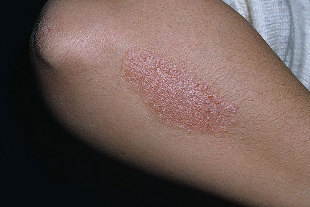
According to the international classification of diseases psoriasis is assigned a code of L40. This means, that refers to the papuloscentus rape (from lat. papula - "knot" and squama - "scales").
L40.0 Psoriasis vulgaris
Other names: plaque-like. Is diagnosed nearly 90% of the patients. It is manifested papules scales in the structure. The plates can have grey, silver, white or pinkish. Papules sometimes grow, coalesce with the neighbouring countries, and are formed at integer values of "the island" or "the lake".
L40.1 Psoriasis pustular generalized
Other names: effusion, the impetigo, the disease Tsumbush. It is considered the most serious; it is manifested bubbles, or blisters, filled with inflammatory substance exudate. If the bubble is revealed, and comes within of the infection, the psoriasis becomes a pus-like. Often these blisters are found on the hands and feet, less in the body.
L40.2 Acrodermatitis resistant
Other names: crocker as dermatitis, dermatitis Settona. The contents of pustules (pustules), which are generated with this form of psoriasis, sterile, therefore, acrodermatitis is not contagious. The main drawback is that the plates can be formed in the fingers, so that you can detach from the nail.
L40.3 Pustules the palms of the hands and soles of the feet
Other names: pustular bactericide. By the name it is clear is that, with this type of psoriasis, involvement of the soles of the feet and the palm of the hand. Cover of big and small pústulasbubbled entities, which gradually grow and expand in the square. The contents of pustules is sterile, but pustular bactericide is considered a serious disease. The treatment is complicated by the fact that pustules are constantly exposed to mechanical abrasion (friction and are revealed when walking).
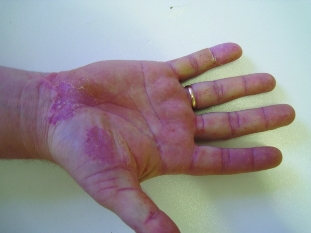
L40.4 guttate Psoriasis
It manifests with small spots of lilac-colored, scattered thigh, shins, forearms , shoulders, head, neck, and back. Often develops after the transfer of the streptococcal angina or pharyngitis .
L40.5-7 Psoriasis arthropathic
Other names: psoriatic arthropathy, psoriatic arthritis. The disease affects about 10% of all patients of psoriasis. Affects the joints and connective tissue . Outwardly it is manifested by swelling of the phalanges of the fingers of his hands and feet. Least surprising of the hip, humeroscapular, the knee joints and the spine. Sometimes leads to disability: the patient can not move.
L40.8 Other psoriasis
Other names: the return of the psoriasis. Manifests soft, swollen spots, which almost does not peel off and is localized in the skin folds and in the folds (in the groin, the elbows, on the external genitals, under the breasts, etc). The difficulty of the treatment of other psoriasis related to the friction of the affected areas, as well as the allocation of sweat in the folds of the skin. Often, the return of the psoriasis is the cause of the fungal infection.
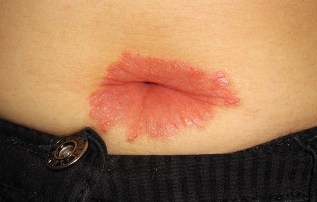
L40.9 Psoriasis, unspecified
This includes all the other forms of psoriasis, that are not suited to a big that would be.
There is another division of the psoriasis in the category of clinical classification.
On the location of
Psoriatic plaques can be applied on different parts of the body.
- The palm of the hand and soles of the feet. As has already been elucidated above, it is pustular bactericide (code L40.3).
- Of the joints . About psoriatic arthritis they also said (code L40.5-7).
- The mucous membranes. The eruptions are manifest in the oral cavity, conjunctiva and on the mucous membranes of the genital organs. Education in the form of inflammatory elements in different ways, but with clear limits. Around a small swelling.
- Nails . Scientific name: psoriatic onychodystrophy. Symptoms: holes and grooves in the surface of the nail, dampen the surface of the nail, flaking, crumbling, x-rays of the capillaries, itching near the cuticle.
- Hairy part of the head. This type is called seborrheic psoriasis. Many confuse with dandruff , because one of the symptoms is the flaking of the skin of the head. But seborrheic psoriasis much more unpleasant form of the disease, because the skin is cracked also in the field of ears, and may extend to the neck. All accompanied by a strong discomfort and ecchymosis when ripping scab .
- The large folds of the skin or intertrigio psoriasis. The plates are formed between the fingers, in the groin, armpits, under the breasts in women.
- The surface of the body. This phenomenon is called the effect erythroderma. A variant of this disease has a high percentage of death , because the cause of the defeat of plates of the skin loses its major functions: temperature regulation, protection barrier, etc
- The system of the defeat is also dangerous, because it refers to the combination of several types of psoriasis.
For the clinical picture
The manifestations of psoriasis is:
- ordinary (vulgar);
- exudative;
- pustular;
- arthropathic;
- as erythroderma.
Psoriatic erythroderma
All the types examined above.
The stage of development
If it is considered that the psoriasis from the point of view of your essay , they can be divided into several stages.
Progressive psoriasis
The stage of maturation of the inflammation. It has the following features:
- education pink papules smooth;
- itching;
- inflammatory reaction after irritation of papules (scratch, attempts to puncture with the needle or toothpick, etc);
- the beginning of the peeling of the individual elements.
Fixed psoriasis
The stage takes place almost without changes:
- new papules will not be formed;
- the old card does not increase in size;
- peeling mild.
Retrogressive psoriasis
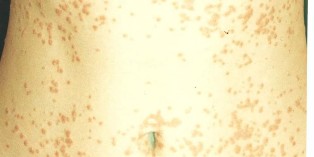
The last stage, when the wounds are. The healing begins with the half. In the place of a former plate to form the white depigmented mota, who already does not cause discomfort, in addition to aesthetic pillar.
Due to the seasonality of the exacerbation of
For psoriasis are characteristic of the season of relapse. In this sense, are distinguished:
- years of psoriasis: worsens under the action of the solar rays;
- winter psoriasis; develops because of the cold weather, that affects the skin.
- off-season of psoriasis: the most severe of lack of remission periods. That is to say, the disease occurs throughout the year.
So you see the manifestation of psoriasis in the form of
Of the square of the lesions of the skin
In this classification only 2 types of psoriasis:
- limited - it is less than 20% of the skin of the body;
- common - more than 20%;
- the universal - spread throughout the epidermis.
Classification of the National fund (united states)
Psoriasis varies and the square of the defeat:
- easy: the defeat of up to 2 % of the surface of the skin;
- half: 2-10%;
- severe: more than 10%.
International index PASI
Table to calculate the index of lesions of psoriasis
The index PASI is represented as a number from 0 to 72 and means the degree of severity of the rupture of the psoriasis from the weaker clinical signs ( erythema and flaking) to severe (ecchymoses, suppuration). The index is based on the specialists.
The treatment of psoriasis
The policies of treatment of the disease involve the application of a whole set of methods. To do this, it is important to follow the three main objectives:
- achieve rapid primary positive results;
- track the ineffectiveness of some of the methodologies and undo, but continue to use what helps;
- remove from the patient in remission.
Among the types of treatment of psoriasis are divided into two:
- non-drug;
- pharmacological.
Non-drug treatment
If there is the possibility of dispensing the medications, the doctors are always trying to use this. In the treatment of psoriasis the important role that could play in several factors non-drug therapy.The mode of the day
People who suffer from psoriasis, they should:
- try to stop smoking;
- to exclude the alcohol (including beer);
- wear clothes and sleep in their underwear, only from natural fabrics;
- change the washing powder in the laundry soap ;
- briefly, I cut out the nail;
- wash only in the shower, to not attend a steam bath and sauna;
- try to exclude the stress.
Diet for psoriasis
On the positive dynamics in the treatment of psoriasis well affects a low-protein diet, restricting protein up to 30 g / day. Good results indicate that patients once a week do the download. On this day you can eat 2-3 of tomato, a few leaves of lettuce, 1 cucumber, 2 to 3 cups of green tea and 300 ml of sugar-free aeration.
General principles of dietetics and nutrition in the psoriasis include:
- freshly squeezed citrus and fruit juices;
- fresh or steamed vegetables;
- slightly fish;
- products of flour only from the flour of rye;
- nuts, fruits;
- nuts (not more than 50 g / day).
You should also limit or exclude: meat, cereals, cold meats, sugar, potatoes, cheese, beans, oil, candy, coffee.
Spa therapy
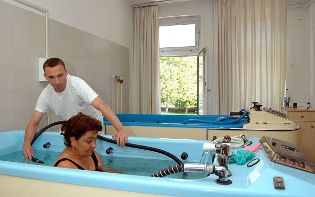
Spa therapy lead away in the last place in the treatment of psoriasis. It is an excellent - relapse factor.
Cure psoriasis can also in the Dead sea .The main advantage of balneotherapy: the force of nature in the fight against the disease. Treatments of water, balanced diet, the pure air and gentle sun - all this will allow to reduce the symptoms of psoriasis and out of remission.
A variant of the balneotherapy varicose veins is the treatment of fish Claw rufus . These small creatures do not have teeth, but their lips are gently eat up, particles of scaly skin and improve the microcirculation external of the epidermis. In addition, the procedure that gives you a relaxing effect.
Physiotherapy
Among the methods of physiotherapy in the fight against psoriasis of the skin are the following:
- the ultraviolet radiation;
- the balancing of phototherapy ;
- lazeroterapiya ;
- the radiation therapy;
- cryotherapy (treatment with cold);
- electric;
- phonophoresis .
With the help of physical therapy you can achieve good aesthetic results, as almost all of the methods involve different types of exposure to the skin from the outside. The plates become the less, form the cells of the skin healthy.
Photochemotherapy
This method selected separately, as it is one of the most effective in the treatment of psoriasis. Use it even in the severe forms of the disease, which are difficult for other physiotherapy procedures. Photochemotherapy consists of the influence on the skin long wave UVA. Therefore, another name for the method of puva therapy (PUVA) .
The pharmacological treatment
The treatment of psoriasis medications may also help relieve the main symptoms and send the patient on the path to recovery. We can distinguish three general stages (system) for the treatment of psoriasis:
- An early treatment. It takes place in a period of severe course of the disease, and is intended to relieve the acute symptoms. The drugs are used-steroids, medications and, sometimes, immunosuppressive .
- Phase of transition. Involves the gradual introduction of the weakest of the drugs, which will be accepted by the patient change.
- Current maintenance therapy.
Medical therapy includes the application of external medications:
- creams;
- foams;
- gels;
- lotions;
- the ointments;
- aerosols.
Hormonal ointment base-the-counter hydrocortisone that is used for the treatment of psoriasis
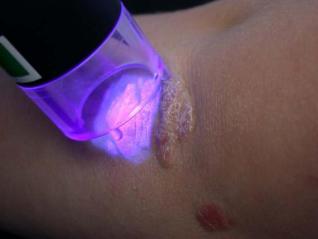
The medication can be purchase or made by the recipes of folk medicine. The tools can stay in the open air or under the sealed bandage in the eyes. The maximum effect in the treatment of psoriasis given the combination of medical therapies and non-drug therapy. All of the tools and methods to collect the doctor.
Conclusion
As we see, the species and forms of psoriasis a lot, and determine what type of disease is the, it is very difficult. Therefore, when you are primary symptoms you should go to the doctor, who will determine the type of psoriasis and prescribe the appropriate treatment. The sooner you begin to fight the psoriasis, more effective and quicker will be the result.























